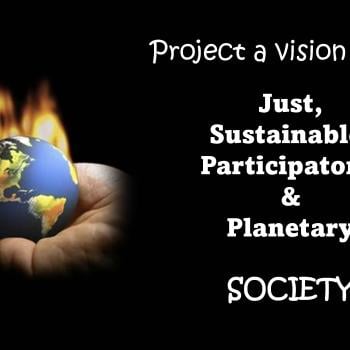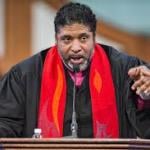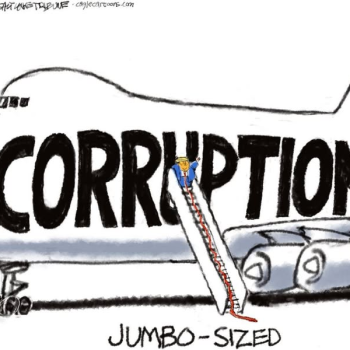Robert John Russell: Scholar, Colleague, Friend
Robert John Russell: In Celebration. SR 5011
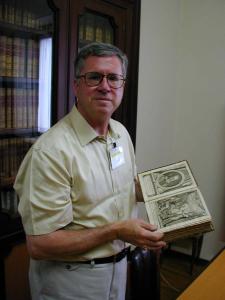
May 19, 2022 marks a threshold in the history of the field of Science and Religion. This is the date my colleague and friend, Robert John Russell, retired after four decades of leading the Center for Theology and the Natural Sciences (CTNS) at the Graduate Theological Union (GTU) in Berkeley, California.
Although there were predecessors, to be sure, we date the birth of the contemporary era of Theology and Science with the 1966 publication of Ian G. Barbour’s Issues in Science and Religion (Barbour 1966). Bob became Ian’s understudy. Together Ian and Bob drew out of thin air the vision of what would become CTNS. Uriah Kim, President of the GTU, said in his opening remarks that Bob created CTNS ex nihilo. At this moment of retirement Bob was sitting in the Ian G. Barbour Chair for Theology and Science.
In this Patheos blog series on Public Theology, I have argued that the public theologian should develop a Theology of Nature that incorporates the best of contemporary science. I can say this with confidence after sharing four decades in doing just this with my colleague and friend, Robert John Russell.
Counting Blessings instead of Sheep
“Count your blessings instead of sheep.” Irving Berlin gave us that song in 1954. I take it to heart.
The biggest blessing to jump the dreamy fence in my professional life has been Robert John Russell. It was 1981, if I recall correctly. Bob asked me to join the board overseeing his newly established Center for Theology and the Natural Sciences (CTNS). Two of my admired senior colleagues—Claude Welch and Durwood Foster—had already signed up with Bob. Should I join them?
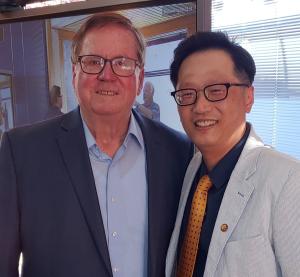
“No,” I said to Bob. I don’t think I’m qualified.
“Why not?” asked Bob.
“Well,” I said, shuffling my feet. “I do science and culture. That’s what I learned from Langdon Gilkey. I can’t work with actual Bunsen Burner scientists.”
“Why not?” Bob pressed.
“Well,” with more feet shuffling. “Those scientists are so smart. They really know a lot.”
“What do they know a lot about?” Bob would not let go.
“About their special subject in science,” I said.
“Do scientists know anything about theology?”
“Well, no. Probably not.”
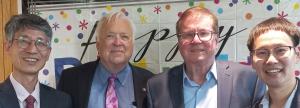
“Do you know a lot about theology.”
“Yes, of course.”
“Well, then you’re even. Right!?” Bob concluded on my behalf.
I became persuaded to join CTNS.[1] One of the best decisions I’ve ever made.
This was a blessing because Bob introduced me to a new way of pursuing theology. In teams! Theology could become a progressive research programme with experts from different fields—including scientists—working as a team to solve a common problem. The rest is history.
The Bob ‘n’ Ted Show
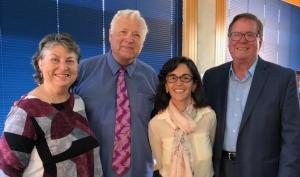
More than once we heard students in our seminars introduce themselves saying, “I want to join the Bob ‘n’ Ted show.”
When Bob and I would team teach, we would frequently select the next topic on our list of problems to be solved. Without planning it, what Bob and I would say during the class constituted an example of progressive research in action. We demonstrated what it means to be a scholar. In one seminar we taught together on the Trinity, four students wrote term papers that later were expanded into published books.
Divine Action with the Vatican Observatory
Along with George Coyne, S.J., Bill Stoeger, S.J., and Nancey Murphy, Bob planned what became a threshold-crossing advance for the field of Theology and Science. This was the series on divine action in nature’s world from 1987 to 2007 (R. J. Russell 2008). Teams of physicists, philosophers, and theologians met every three years or so either in Rome or Berkeley to answer the question: how does God act in nature in providential yet non-interventionist ways?
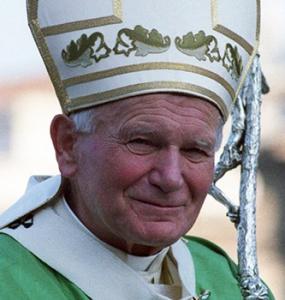
His Holiness, Pope John Paul II, registered thrill and gratitude for the perseverance of this team of scholars willing to tackle some of the most impenetrable questions. Because this was the era of Star Wars movies, His Holiness was got nicknamed J-2 P-2. He left us with this golden nugget.
“Science can purify religion from error and superstition; religion can purify science from idolatry and false absolutes. Each can draw the other into a wider world, a world in which both can flourish.” (Pope, 1988)
Non-Interventionist Objective Divine Action (NIODA)
Listed among Bob’s breakthrough ideas during this era was the constructive proposal for Non-Interventionist Objective Divine Action or NIODA. The Vatican scholars by and large were searching for an adequate explanation for God’s action in nature’s world that could avoid the trappings of supernaturalism and interventionism. Bob proposed that God acts at the sub-atomic level within the framework of indeterminacy. That is, quantum indeterminacy as proposed by Niels Bohr and the Copenhagen school. If God determines the path of the electron, argued Bob, then God God breaks no law of nature. God acts without breaking a natural law. Yet, God acts providentially and creatively.
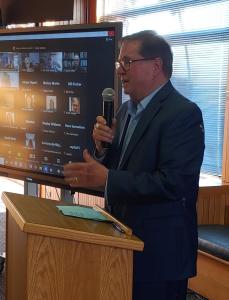 “I call this type of divine action non-interventionist view of objective special providence or non-interventionist objective divine action (NIODA)” (Russell, Cosmology from Alpha to Omega: The Creative Mutual Interaction of Theology and Science 2008, 117). “NIODA in no way runs into conflict with science since it bases its philosophical interpretation of the processes of nature in the theories of the natural sciences” (Russell, Cosmology from Alpha to Omega: The Creative Mutual Interaction of Theology and Science 2008, 140)
“I call this type of divine action non-interventionist view of objective special providence or non-interventionist objective divine action (NIODA)” (Russell, Cosmology from Alpha to Omega: The Creative Mutual Interaction of Theology and Science 2008, 117). “NIODA in no way runs into conflict with science since it bases its philosophical interpretation of the processes of nature in the theories of the natural sciences” (Russell, Cosmology from Alpha to Omega: The Creative Mutual Interaction of Theology and Science 2008, 140)
God acts within the atom. Don’t worry if atoms are small. Atoms are everywhere. So, God’s action is everywhere. And, at every level of physical reality. What Bob has just done with NIODA is account for God’s non-miraculous ubiquitous action in a world that experiences indeterminacy and freedom.
Creative Mutual Interaction (CMI)
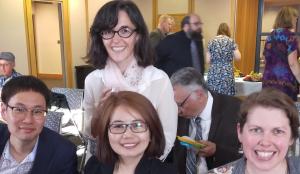
Also listed among Bob’s personal achievements during this era was the development of his model for the relationship between science and theology, Creative Mutual Interaction or CMI. Bob imagines a bridge such as the Golden Gate Bridge, where the traffic goes two directions. One direction: from science to theology. The other direction: from theology to science. “In many ways the bridge is now complete and we can concentrate fully on the rich opportunities and challenges brought on by the flow of knowledge and vision in both directions across the bridge: the creative mutual interaction between theology and science” (R. J. Russell, Cosmology from Alpha to Omega: The Creative Mutual Interaction of Theology and Science 2008, 2).
Jesus’ Easter Resurrection as a Prolepsis of the Eschatological New Creation (FINLON)
In 1990, Bob and I teamed up with Heidelberg’s Michael Welker to take up the question: how might we understand the Christian doctrine of resurrection of the body in light of what we know scientifically? We three scholars along with some of those who attended our working conference concurred that we must work with the ontological connection between God’s promised redemption of all creation with Jesus’ Easter resurrection understood as a proleptic anticipation of that redemption. But, of course, scientifically speaking, dead people stay dead. How might we account for God’s promise of resurrection? Could God change the laws of nature to accommodate this promise? Yes, was Bob’s answer.
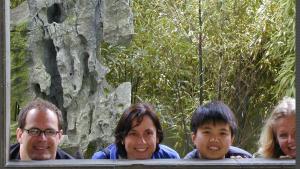
Russell holds on theological grounds that the processes of nature described by science are the result of God’s ongoing action as creator. The regularity of nature’s laws is the result of God’s faithfulness. But, God is free to act in radically new ways, not only in human history but also in the ongoing history of the universe, God’s creation.
At the moment when God raised Jesus from the grave on the first Easter, the law that dead people stay dead was in effect. It remains in effect today. In this context, this divine act leaves us with an anomaly. It could appear to be a miracle, a violaton of existing laws of nature. But, Russell wants us to view that original resurrection as the first instance of a general resurrection. Easter is the advent of the new creation complete with general resurrection. With the advent of God’s new creation, resurrection will become a universal law. In short, Jesus’ Easter resurrection was a prolepsis of the coming general resurrection. So, to us, Easter looks like a miracle. Yet, it’s actually the First Instantiation of a New Law of Nature (FINLON) (Russell, Bodily Resurrection, Eschatology, and Scientific Cosmology 2002).
The Rise of Bobisms
As you can see, we need to collect abbreviations to track Bob’s thinking just as the military does. We call these abbreviations Bobisms (Peters, 2006, 1-17).
NIODA = Non-Interventionist Objective Divine Action
ABSE = Atoms May be Small, but they’re Everywhere
CMI = Creative Mutual Interaction
FINLON = First Instantiation of a New Law of Nature
The Journal: Theology and Science
Along with the fastidious help of then graduate student Whitney Baumen, Bob and I founded the journal, Theology and Science. We had no difficulty in agreeing on an editorial policy.
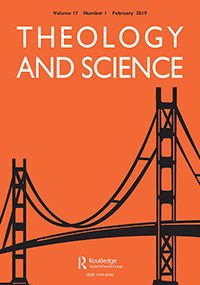 “The primary editorial goal of Theology and Science is to publish critically reviewed articles that promote the creative mutual interaction between the natural sciences and theology….The secondary editorial goal is to monitor and critically assess debates and controversies arising in the broader field of science and religion….This editorial policy is formulated with the guiding confidence that a serious dialogue between science and theology will lead to a variety of new and progressive research programs, and that these in turn will yield new insights, deeper understanding, and new knowledge at the frontiers of science and religion.”
“The primary editorial goal of Theology and Science is to publish critically reviewed articles that promote the creative mutual interaction between the natural sciences and theology….The secondary editorial goal is to monitor and critically assess debates and controversies arising in the broader field of science and religion….This editorial policy is formulated with the guiding confidence that a serious dialogue between science and theology will lead to a variety of new and progressive research programs, and that these in turn will yield new insights, deeper understanding, and new knowledge at the frontiers of science and religion.”
With Nobel Prize winning physicist Charles Townes on the CTNS board at the time, we all agreed that we would exact the greatest academic rigor then known in the field.
Bob and I agreed on a subtle point. We would encourage non-Christian theologians to contribute articles. We would ask each author to write from his or her own doctrinal heritage. Bob and I wished to avoid the vagueness of inter-religious rhetoric that diminishes the integrity of specific religious commitments. We thought of Theology and Science as hosting multi-religious discussions, not inter-religious agendas.
For two decades, Melissia Moritz and Joshua Moritz oiled the management gears to keep production rolling. Joshua himself has become a bright light in the global discussion of theology and science (Moritz 2016).
Today Alan Weissenbacher serves as the Managing Editor of Theology and Science. Dongwhi Kim is the book review editor. Taylor and Francis, the publisher. We think that in Theology and Science we at CTNS provide an articulate voice in the wider science ‘n’ religion discourse that is well worth listening to.
Cross Fertilization and Symbiosis
Because theological understanding and explanation can grow like other knowledge, my own theological construction has been watered, fertilized, and pruned by Bob’s thinking. I’ve sewn many of Bob’s key ideas into my own theological garden. And, of course, Bob has snipped a few of my shoots to bundle with his blossoming ideas. This cross pollination and symbiosis may be what I’m most thankful for.
Here is the pivot around which the gospel sweeps all things into God’s creative and redeeming grace. Even evil and suffering.
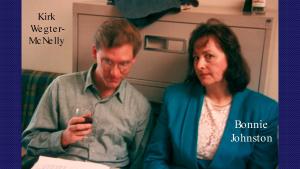 “The only possibility for an adequate response to natural theodicy will be to relocate the problem of sin and evil beyond the theology of creation into a theology of redemption, and this will involve two theological moves: 1)the suffering of God with humanity through the cross of Christ must be extended to include the suffering of all life on earth, and 2) the eschatological hope for a New Creation that began proleptically at Easter with the bodily resurrection of Jesus must also be extended to include the participation of all life in the New Creation” (Russell, The Groaning of Creation: Does God Suffer with All Life? 2008, 139).
“The only possibility for an adequate response to natural theodicy will be to relocate the problem of sin and evil beyond the theology of creation into a theology of redemption, and this will involve two theological moves: 1)the suffering of God with humanity through the cross of Christ must be extended to include the suffering of all life on earth, and 2) the eschatological hope for a New Creation that began proleptically at Easter with the bodily resurrection of Jesus must also be extended to include the participation of all life in the New Creation” (Russell, The Groaning of Creation: Does God Suffer with All Life? 2008, 139).
Now, I could not have said this better myself. Nor would I attempt it.
Charlotte Russell
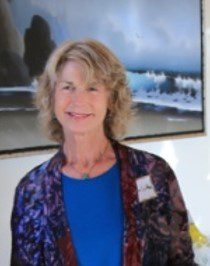
I’m wondering whether the Rev. Charlotte Russell is named after Charlemagne. Over the decades “Charlotte the Great” has spearheaded fund raising and membership drives. She has offered hospitality to students and visiting dignitaries. All for CTNS. I thank Charlotte for loaning Bob to me as a colleague and friend.
Sir John Templeton
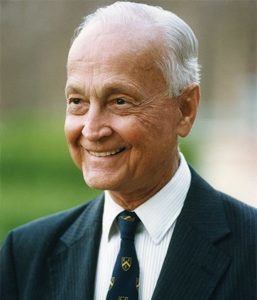
Sir John Templeton and the Templeton Foundation (JTF) embraced the CTNS mission and frequently funded CTNS projects. “Science and the Spiritual Quest”, directed by Mark Richardson and Philip Clayton, was a JTF funded program that made the cover of Newsweek. Bob’s partnership with Sir John contributed to CTNS becoming a research leader with a worldwide reputation.
While I was directing the JTF funded Science and Religious Course Program (1998-2002), a framed photo of Bob hung on the office wall. When Sir John was scheduled to pay us a visit, we cleaned up the office as one might expect. One of the staff framed a picture of Sir John equal in size to that of Bob and hung it next to Bob’s. When Sir John arrived, he was greeted warmly by the staff while standing in front of the two pictures. He seemed to notice. Yet, nothing was said.
Braden Molhoek
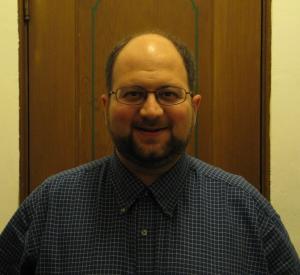 Bob will be leaving teaching and administration in the able hands of former student and now professor, Braden Molhoek. Braden is becoming Director of CTNS and the Ian G. Barbour Assistant Professor of Theology, Science, Ethics, and Technology. The field of Science and Religion will benefit from Braden’s creative contributions.
Bob will be leaving teaching and administration in the able hands of former student and now professor, Braden Molhoek. Braden is becoming Director of CTNS and the Ian G. Barbour Assistant Professor of Theology, Science, Ethics, and Technology. The field of Science and Religion will benefit from Braden’s creative contributions.
Finally, it’s about Truth!
Many of us have some favorite quotes. Here is one of mine. It’s one co-authored by Bob along with Kirk Wegter-McNelly, a former student of Bob’s and now a leader in his own right. Finally, it’s about truth.
“Science at its best, and theology at its best, both pursue truth….If it be true, as theologians claim, that the God of Israel is the creator of this magnificent universe, then every truth about this universe discovered by science only enhances appreciation for God’s creative handiwork” (R. J.-M. Russell 2004, 34)
That’s my colleague and friend, Robert John Russell.
▓
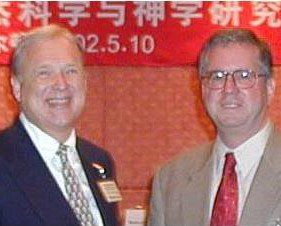 Along with Robert John Russell, Ted Peters teaches and conducts research at the intersection of science, religion, and ethics. Peters is an emeritus professor at the Graduate Theological Union, where, with Russell, he co-edits the journal, Theology and Science, on behalf of the Center for Theology and the Natural Sciences, in Berkeley, California, USA. He authored Playing God? Genetic Determinism and Human Freedom? (Routledge, 2nd ed., 2002) as well as Science, Theology, and Ethics (Ashgate 2003). Along with Martinez Hewlett, Joshua Moritz, and Robert John Russell, he co-edited, Astrotheology: Science and Theology Meet Extraterrestrial Intelligence (2018). Along with Octavio Chon Torres, Joseph Seckbach, and Russell Gordon, he co-edited, Astrobiology: Science, Ethics, and Public Policy (Scrivener 2021). See his website: TedsTimelyTake.com.
Along with Robert John Russell, Ted Peters teaches and conducts research at the intersection of science, religion, and ethics. Peters is an emeritus professor at the Graduate Theological Union, where, with Russell, he co-edits the journal, Theology and Science, on behalf of the Center for Theology and the Natural Sciences, in Berkeley, California, USA. He authored Playing God? Genetic Determinism and Human Freedom? (Routledge, 2nd ed., 2002) as well as Science, Theology, and Ethics (Ashgate 2003). Along with Martinez Hewlett, Joshua Moritz, and Robert John Russell, he co-edited, Astrotheology: Science and Theology Meet Extraterrestrial Intelligence (2018). Along with Octavio Chon Torres, Joseph Seckbach, and Russell Gordon, he co-edited, Astrobiology: Science, Ethics, and Public Policy (Scrivener 2021). See his website: TedsTimelyTake.com.
▓
[1] There are resources for the field of Science and Religion that I frequently point out. If you are an evangelical Christian, tether yourself to BioLogos. If you are a Muslim, note how Iranian physicist, Medhi Golshani, collects affirmative testimonies in his series of books, Can Science Dispense with Religion? (Golshani, 2021) If you are Jewish, then visit Sinai and Synapses. If you are a Lutheran, join the Lutheran Alliance for Faith, Science, and Technology and visit monthly Covalence Magazine.At the AAAS in Washington DC, astronomer Jennifer Wisemen directs DoSER (Dialogue on Science, Ethics, and Religion). (ESSSAT (European Society for the Study of Science and Theology) publishes a fine newsletter. Visit also Greg Cootsona’s blog, Science for the Church, along with reading the Science and Religion Initiative Newsletter. The journal, Zygon, has been a pioneer publication for half a century, drawing scholars from IRAS (Institute for Religion in an Age of Science).
The Clergy Letter Project under the leadership of Michael Zimmerman focuses on the evolution controversy and the ecological crisis. At Cambridge University, Denis Alexander leads the Faraday Institute for Science and Religion. Are you down under? Then try Australia’s thriving organization, ISCAST (Institute for the Study of Christianity in an Age of Science and Technology).
In Berkeley, I work with physicist-theologian Robert John Russell at the Center for Theology and the Natural Sciences, which is part of the Graduate Theological Union. For two decades we have published a fine scholarly journal, Theology and Science. The science-religion sandbox is filled with lots and lots of toys for our minds to play with.
For levity, sing along with Francis Collins, former director of the U.S. National Institutes of Health, and Paul Vischer, creator of Veggie Tales.
Bibliography
Barbour, Ian. 1966. Issues in Science and Religion. New York: Prentice Hall and Harper.
Moritz, Joshua. 2016. Science and Religion: Beyond Warfare and Toward Understanding. Winona MN: Anselm Academic ISBN 978-1-59982-715-5.
Peters, Ted, and Nathan Hallanger, eds. 2006. God’s Action in Nature’s World: Essays in Honor of Robert John Russell. Aldershot UK: Ashgate.
Pope John Paul II, 1988. “Letter to the Reverend George V. Coyne, S.J.,” in Physics, Philosophy, and Theology. Eds., Robert John Russell, William R. Stoeger, S.J., and George V. Coyne, S.J. Vatican City State: Vatican Observatory.
Russell, Robert John. 2002. “Bodily Resurrection, Eschatology, and Scientific Cosmology,” in Resurrection: Theological and Scientific Assessments. Eds., Ted Peters, Robert John Russell, and Michael Welker. Grand Rapids MI: Wm. B. Eerdmans; 3-30.
Russell, Robert John. 2008. Cosmology from Alpha to Omega: The Creative Mutual Interaction of Theology and Science. Minneapolis MN: Fortress Press ISBN 978-0-8006-6273-8.
Russell, Robert John. 2008. “The Groaning of Creation: Does God Suffer with All Life?” In The Evolution of Evil, by Martinez Hewlett, Ted Peters, and Robert John Russell, eds Gaymon Bennett, 120-140. Gottingn: Vandenhoeck & Ruprecht.
—. 2012. Time in Eternity: Pannenberg, Physics, and Eschatology in Creative Mutual Interaction. Notre Dame IN: University of Notre Dame Press ISBN 13: 978-0-268-04059-8.
Russell, Robert John, and Kirk Wegter-McNelly. 2004. “Science and Theology: Mutual Interaction.” In Bridging Science and Religion, by Gaymon Bennett, and Kang Phee Seng, eds. Ted Peters, 19-34. London: SCM.
Russell, Robert John, Nancey Murphy, and William Stoeger, eds. 2008. Scientific Perspectives on Divine Action: Twenty Years of Challenge and Progress. Vatican City: Vatican Observatory Foundation ISBN 978-88-209-7961-4.





